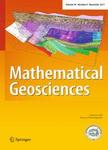版权所有:内蒙古大学图书馆 技术提供:维普资讯• 智图
内蒙古自治区呼和浩特市赛罕区大学西街235号 邮编: 010021

作者机构:Dartmouth Coll Dept Earth Sci Hanover NH 03755 USA Dartmouth Coll Dept Comp Sci Hanover NH 03755 USA
出 版 物:《MATHEMATICAL GEOLOGY》 (数学地质学)
年 卷 期:2002年第34卷第8期
页 面:929-952页
核心收录:
学科分类:0709[理学-地质学] 081803[工学-地质工程] 07[理学] 08[工学] 0708[理学-地球物理学] 0818[工学-地质资源与地质工程] 0701[理学-数学]
基 金:National Science Foundation NSF (EAR-99-09335 EIA-98-02068 IIS-99-83806)
主 题:landscape evolution geomorphology process-based modeling digital elevation model (DEM) photogrammetry structure from motion
摘 要:Quantifications of Earth surface topography are essential for modeling the connections between physical and chemical processes of erosion and the shape of the landscape. Enormous investments are made in developing and testing process-based landscape evolution models. These models may never be applied to real topography because of the difficulties in obtaining high-resolution (1-2 m) topographic data in the form of digital elevation models (DEMs). Here we present a simple methodology to extract the high-resolution three-dimensional topographic surface from photographs taken with a hand-held camera with no constraints imposed on the camera positions or field survey. This technique requires only the selection of corresponding points in three or more photographs. From these corresponding points the unknown camera positions and surface topography are simultaneously estimated. We compare results from surface reconstructions estimated from high-resolution survey data from field sites in the Oregon Coast Range and northern California to verify our technique. Our most rigorous test of the algorithms presented here is from the soil-mantled hillslopes of the Santa Cruz marine terrace sequence. Results from three unconstrained photographs yield an estimated surface, with errors on the order of 1 m, that compares well with high-resolution GPS survey data and can be used as an input DEM in process-based landscape evolution modeling.